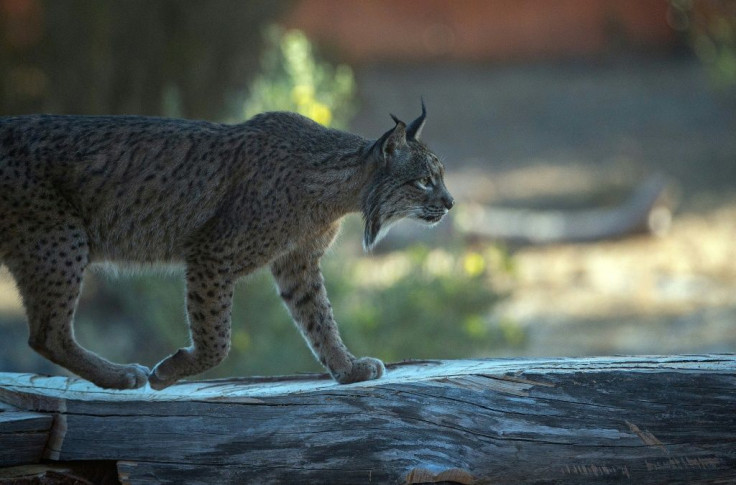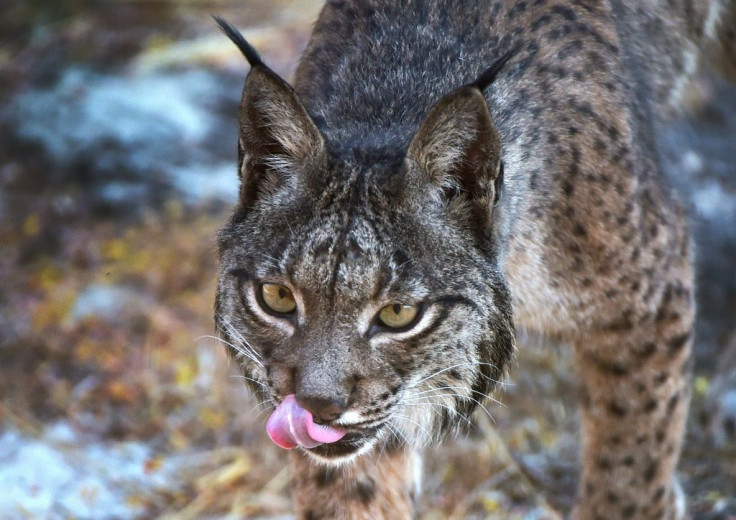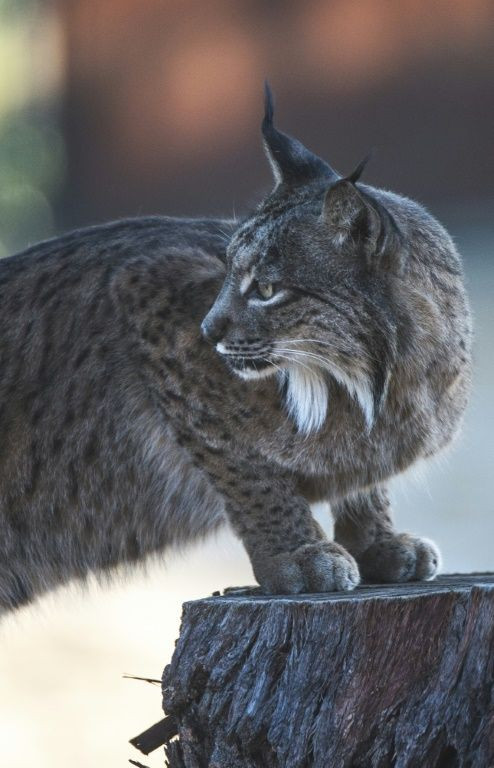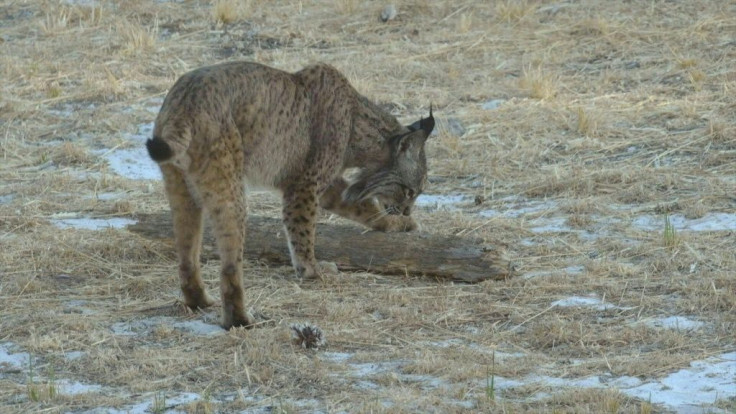In Spain, Iberian Lynx Claws Back From Brink Of Extinction
At a nature reserve in southern Spain, four baby Iberian lynxes sleep peacefully beside their mother, part of a captive breeding programme that has brought the species back from the brink of extinction.
The El Acebuche breeding centre at the Donana National Park, home to one of Europe's largest wetlands, is one of five breeding sites set up in the 2000s to boost their numbers in the wild. Four are in Spain and one in Portugal.
Slightly larger than a red fox, the Iberian lynx is distinguished by a white-and-black beard and black ear tufts.

There were around 100,000 of them in the two nations at start of the 20th century, but urban development, hunting and road kill all took their toll.
Most damaging of all however was a dramatic decline in the numbers of wild rabbits, their main prey, due to disease. By 2002, the wild cat's numbers had plummeted to fewer than 100.
That prompted warnings from the WWF that the Iberian lynx -- found only in Spain and Portugal -- risked becoming the first big cat to fall into extinction since the sabre-tooth tiger died out 10,000 years ago.

The authorities and conservation groups have managed to reverse the trend by fighting poaching, reintroducing rabbits into the wild and -- most important of all -- through the breeding programme.
By the end of last year there were just over 1,100 Iberian lynxes living in the two countries, most of them in Spain's southern region of Andalusia.
The conservation programme has also reintroduced captive-bred animals across southern and central Spain in the regions of Castilla-La Mancha, Extremadura and Murcia -- as well as in Portugal.

"We are very pleased and surprised by the results," the coordinator of the El Acebuche breeding centre, Antonio Rivas, told AFP.

The five breeding centres have managed to become "lynx-producing factories", he said.
The lynxes live and breed in a large, enclosed park that recreates their natural habitat. Their caretakers try to disturb them as little as possible to prevent the animals from getting used to the presence of humans.
These days, the main cause of death for wild lynxes is related to human activities such as poaching, said Rivas: "So the less interaction they have with humans, the better it will be."

The lynxes live off a diet of live rabbits, which staff place in a box that only opens several hours later. That delay prevents the lynx from associating the presence of the rabbits with humans, said caretaker Antonio Pardo.
He and all the other staff members wear face masks at all times because the lynxes, like other feline species, can catch Covid-19.
A system of cameras and microphones help staff monitor the animals around the clock to study their behaviour.
Sitting in front of a wall of screens, Blanca Rodriguez points to one showing Nota and her litter: Sismo, Sicilia, Senegal and Susurro.
"It's nap time, we're going to see them rest," she said.
In March 2005, El Acebuche recorded its first births of Iberian lynxes in captivity -- three cubs, two of which survived.
The first litters remained in captivity for several years until they reached breeding age, so as to avoid having to capture more felines in the wild.
But since 2011 the breeding centres have released just over 300 lynxes.
When they are about one year old the lynxes are tagged with a GPS tracker and taken to their natural habitat "where we open the cage and... freedom!" said Rivas.
About 70 percent of them survive and each female lynx has up to six kittens per year.
Despite these encouraging results however, the International Union for Conservation of Nature still lists the animal as "endangered".
The WWF estimates the species will be out of danger only when its population surpasses 3,000, including 750 breeding females.
© Copyright AFP {{Year}}. All rights reserved.





















